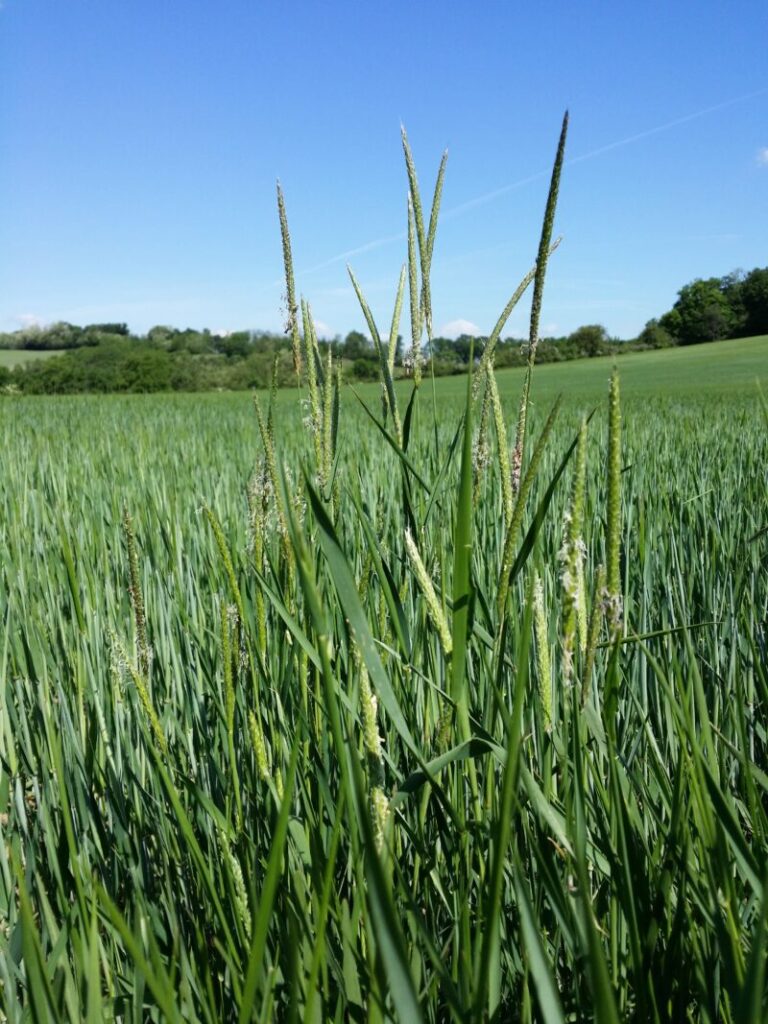Menu
Menu
In the realm of agriculture, the ongoing battle against herbicide-resistant weeds presents a persistent challenge. The emergence of spontaneous mutants with herbicide resistance in weed populations poses a grave threat to crop yields and food security. Among these troublesome weeds, blackgrass (Alopecurus myosuroides) stands out as a prominent example of an adaptable adversary. A recent research study, published in the journal Proceedings of the National Academy of Sciences, delves into the genetic variations responsible for herbicide resistance in blackgrass and explores the evolution of these mutations. What makes this study notable is the investigation of whether these resistant genes are pre-existing components of the blackgrass genome or if mutations spontaneously arose in response to the widespread use of herbicides.
Blackgrass is a significant weed in cereal crops, particularly in the United Kingdom and other parts of Europe. The annual hit to profits caused by herbicide resistant blackgrass was estimated to be nearly half a billion euros in 2019. With herbicide resistance spreading rapidly across weeds, farmers and researchers continue to scramble for solutions. To tackle this problem effectively, it is crucial to understand the underlying mechanisms of resistance evolution.
Standing genetic variation represents the existing genetic diversity within a population that can be leveraged when environmental conditions shift. In the context of herbicide resistance, this implies that certain blackgrass plants may already possess genetic mutations that reduce their susceptibility to herbicides even before herbicides are introduced. These mutations are not newly arisen or spontaneous as they have been persisting in the genome over time.

To dive deeper into herbicide resistance evolution in blackgrass, the researchers constructed a high-quality reference genome by integrating PacBio continuous long reads, Illumina PCR-free short reads, and Hi-C chromatin contact data. This reference genome was then utilized to contrast empirical data with outcomes from probabilistic models of adaptation.
The study discerned two distinct resistance mechanisms: target-site resistance (TSR) and non-target site resistance (NTSR). TSRs result from coding sequence mutations or gene amplification, impacting the proteins targeted by herbicides. On the other hand, NTSRs involve augmented metabolic processes, such as herbicide detoxification or sequestration.
When comparing the data obtained from model simulations of standing genetic variation to de novo mutations, the study highlighted that standing genetic variations predominantly drive herbicide resistance evolution, whereas de novo mutations are often lost due to genetic drift.
Understanding the genetic mechanisms and evolutionary processes behind rapid adaptation is vital in the fight against herbicide-resistant weeds in agriculture. Enabled by an assembled high-quality genome of blackgrass, this study successfully simulated the evolution of mutations involved in herbicide resistance. These findings represent the initial stride in comprehending how organisms swiftly react to strong selection pressures, shedding light on the interplay between newly arising mutations and those already existing within the population. In the case of blackgrass, these long-standing mutations are not only responsible for the rapid development of resistance to current herbicides but also for potential future modes of action. Armed with this knowledge, identification of novel methods for controlling weed propagation has become more tractable.